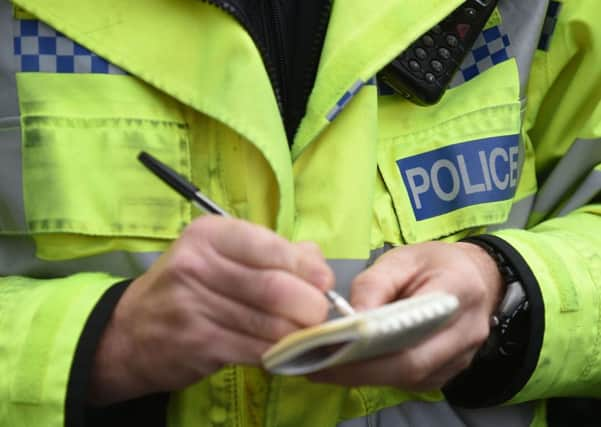44% have not seen uniformed police on foot in past year, survey says


A large-scale survey indicates that the bobby on the beat is a rare sight for a rising percentage of the population.
While more than four-fifths of participants felt it was important to have a regular uniformed police presence, only 17% believed they had this locally.
Advertisement
Hide AdAdvertisement
Hide AdThe proportion who said they had not seen a uniformed officer in their area was 44% this year- up from 41% in 2016 and 36% in 2015.
The percentage saying they had not seen uniformed personnel in a vehicle in the past year was lower, at 12%.
The survey of 12,662 people was carried out by Ipsos MORI for HM Inspectorate of Constabulary and Fire & Rescue Services to gauge perceptions of crime, safety and local policing.
A report detailing the findings noted that public sentiment around police visibility “can be strong and have a significant bearing on broader attitudes to policing and local safety”.
Advertisement
Hide AdAdvertisement
Hide AdIt said: “Regular local uniformed police presence remains important for participants.
“However, as in previous years, the proportion who are satisfied with the level of local uniformed police presence is far lower than the proportion who are dissatisfied (24% vs 41%).”
The inspectorate has previously raised concerns over the impacts of an “erosion” of neighbourhood policing.
Elsewhere, the research found a marked increase in confidence in the police to provide protection during a terrorist attack.
Advertisement
Hide AdAdvertisement
Hide AdOver half (55%) said that they would be “very” or “fairly” confident in police dealing with such an incident, compared with 46% in 2016.
“This is likely to reflect a shift in public perception following the response of the police to recent terrorist incidents,” the report said.
In other findings:
* Three in 10 (30%) considered crime and anti-social behaviour to be a big problem in their local area - a five percentage point increase since 2015
* Just over half (53%) were satisfied with the police - similar to last year when the percentage was 52%
Advertisement
Hide AdAdvertisement
Hide Ad* The proportion who said the service provided by local police has got worse increased to a quarter (25%) from 20% in 2016
* The main responsibilities for policing were identified as responding in person to emergencies, tackling crime of all types and countering terrorism and extremism
* Most participants associated policing with positive attributes, while twice as many who expressed a view would speak highly about their local force as would be critical
HM inspector Matt Parr said: “After a year in which the emergency services have faced some of the most challenging incidents in recent times, it is encouraging to see that the public’s confidence in the police to protect them against terrorism has increased markedly.”
Advertisement
Hide AdAdvertisement
Hide AdHe added that the importance of visible local policing “continues to resonate with the public”.
National Police Chiefs’ Council chairwoman Sara Thornton said it had been a “challenging” year following five terrorist attacks, adding that the public’s increased confidence in the police service is “a real testament to the courage and professionalism of all of our officers and staff”.
Ms Thornton said: “Everyone in policing works tirelessly to earn the trust of the communities they protect and I am extremely proud of everything they have done this year.
“We know that local policing is absolutely crucial to countering terrorist plots, disrupting serious and organised crime networks and safeguard the most vulnerable in society, so all chief constables are working hard to ensure the service is as visible and approachable as possible.
“We are also continuing to drive forward our ambitious transformation and reform programme to develop the modern capabilities that we need to tackle the threats that we face in 2018 and beyond.”